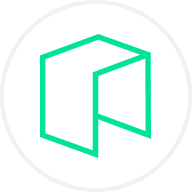
RVN
Prezzo di Ravencoin
$0,011470
-$0,00126
(-9,90%)
Variazione di prezzo nelle ultime 24 ore

Come ti senti oggi circa i RVN?
Condividi i tuoi sentimenti qui mettendo un pollice in su se ti senti rialzista per quanto riguarda la criptovaluta o un pollice in giù se ti senti ribassista.
Vota per vedere i risultati
Informazioni sul mercato di Ravencoin
Capitalizzazione di mercato
La capitalizzazione di mercato viene calcolata moltiplicando l'offerta circolante di una criptovaluta per il suo ultimo prezzo.
Capitalizzazione di mercato = Offerta circolante x Ultimo prezzo
Capitalizzazione di mercato = Offerta circolante x Ultimo prezzo
Offerta circolante
L'importo totale di una criptovaluta disponibile pubblicamente sul mercato.
Grado di capitalizzazione di mercato
Il ranking di una criptovaluta in termini di valore della capitalizzazione di mercato.
Massimo storico
Il prezzo massimo di una criptovaluta raggiunto nella sua cronologia di trading.
Minimo storico
Il prezzo minimo di una criptovaluta raggiunto nella sua cronologia di trading.
Capitalizzazione di mercato
$171,79M
Offerta circolante
14.976.978.188 RVN
71,31% di
21.000.000.000 RVN
Grado di capitalizzazione di mercato
132
Audit

Ultimo audit: --
Massimo ultime 24 ore
$0,012780
Minimo ultime 24 ore
$0,011400
Massimo storico
$0,29451
-96,11% (-$0,28304)
Ultimo aggiornamento: 20 feb 2021
Minimo storico
$0,0078200
+46,67% (+$0,0036500)
Ultimo aggiornamento: 13 mar 2020
Calcolatore RVN


Il prezzo oggi dei Ravencoin in USD
Il prezzo attuale di Ravencoin è $0,011470. Nelle ultime 24 ore, Ravencoin è diminuito di -9,90%. Al momento ha un'offerta circolante di 14.976.978.188 RVN e un'offerta massima di 21.000.000.000 RVN, assegnando una capitalizzazione di mercato completamente diluita di $171,79M. Al momento, la criptovaluta Ravencoin detiene la posizione 132 nei ranking di capitalizzazione di mercato. Il prezzo Ravencoin/USD è aggiornato in tempo reale.
Oggi
-$0,00126
-9,90%
7 giorni
-$0,00097
-7,80%
30 giorni
-$0,00207
-15,29%
3 mesi
-$0,01025
-47,20%
Conversioni di Ravencoin popolari
Ultimo aggiornamento: 29/03/2025, 05:28
| 1 RVN in USD | 0,011470 $ |
| 1 RVN in EUR | 0,010595 € |
| 1 RVN in PHP | 0,65794 ₱ |
| 1 RVN in IDR | 190,34 Rp |
| 1 RVN in GBP | 0,0088594 £ |
| 1 RVN in CAD | 0,016423 $ |
| 1 RVN in AED | 0,042130 AED |
| 1 RVN in VND | 293,35 ₫ |
Informazioni su Ravencoin (RVN)
Il rating fornito è un rating aggregato raccolto da OKX dalle fonti date e ha scopo puramente informativo. OKX non garantisce la qualità o la precisione dei rating. Non è destinato a fornire (i) consigli o raccomandazioni in materia di investimenti; (ii) un'offerta o una sollecitazione all'acquisto, alla vendita o al possesso di asset digitali; oppure (iii) consigli di natura finanziaria, contabile, legale o fiscale. Gli asset digitali, tra cui stablecoin e NFT, comportano un elevato livello di rischio, sono soggetti a fluttuazioni estreme e possono perdere tutto il loro valore. Il prezzo e le prestazioni degli asset digitali non sono garantiti e potrebbero variare senza preavviso. I tuoi asset digitali non sono coperti da garanzia contro potenziali perdite. I rendimenti storici non rappresentano un'indicazione di rendimenti futuri. OKX non garantisce alcun rimborso di capitale o interessi. OKX non garantisce il rimborso del capitale o dell'interesse. Valuta attentamente se fare trading o mantenere asset digitali è idoneo per te alla luce delle tue condizioni finanziarie. Consulta il tuo professionista legale/fiscale/di investimenti in caso di domande sulle tue circostanze specifiche.
Mostra di più
- Sito web ufficiale
- White paper
- Github
- Block explorer
Informazioni sui siti Web di terze parti
Informazioni sui siti Web di terze parti
Utilizzando il sito Web di terze parti ("TPW"), accetti che qualsiasi utilizzo del TPW sarà soggetto e regolato dai termini del sito TPW. Salvo espressa indicazione scritta, OKX e le sue affiliate ("OKX") non sono in alcun modo associati al proprietario o all'operatore del TPW. Accetti che OKX non sia responsabile per eventuali perdite, danni e qualsiasi altra conseguenza derivante dall'utilizzo del TPW. Tieni presente che l'utilizzo di un TPW potrebbe comportare una perdita o una riduzione dei tuoi asset.
Domande frequenti relative al prezzo di Ravencoin
Cos'è Ravencoin?
Ravencoin è una blockchain creata da un fork del codice della blockchain Bitcoin. Ravencoin è progettata per consentire a chiunque di creare token che possono essere trasferiti tra persone in modalità peer-to-peer. I token possono rappresentare qualsiasi cosa, da una quota di un progetto di criptovalute ad asset del mondo reale come azioni e documenti di proprietà della casa.
Come funziona Ravencoin?
Ravencoin permette di creare token che rappresentano asset e progetti. Gli utenti di Ravencoin devono bruciare una certa quantità di token RVN per creare un nuovo token. Il creatore del nuovo token definisce anche le caratteristiche dello stesso, come ad esempio la relativa fungibilità, prima della sua creazione.
Dove posso acquistare RVN?
Acquista facilmente token RVN sulla piattaforma di criptovalute OKX. Le coppie di trading disponibili nel terminale di trading di spot di OKX includonoRVN/USDT. Puoi anche eseguire lo swap delle criptovalute esistenti, tra cuiBitcoin (BTC),Ethereum (ETH),Tether (USDT), eUSD Coin (USDC), per RVN senza commissioni e senza slippage di prezzoConverti di OKX.
A quanto corrisponde 1 Ravencoin oggi?
Al momento, un Ravencoin vale $0,011470. Per risposte e informazioni approfondite sull'azione sui prezzi di Ravencoin, sei nel posto giusto. Esplora i grafici Ravencoin più recenti e fai trading in modo responsabile con OKX.
Che cosa sono le criptovalute?
Le criptovalute, ad esempio Ravencoin, sono asset digitali che operano su un ledger pubblico chiamato blockchain. Scopri di più su monete e token offerti su OKX e sui loro diversi attributi, inclusi prezzi e grafici in tempo reale.
Quando è stata inventata la criptovaluta?
A seguito della crisi finanziaria del 2008, l'interesse nei confronti della finanza decentralizzata è cresciuto. Bitcoin ha offerto una nuova soluzione imponendosi come asset digitale sicuro su una rete decentralizzata. Da allora, sono stati creati anche molti altri token come Ravencoin.
Il prezzo di Ravencoin aumenterà oggi?
Dai un'occhiata alla nostra pagina di previsione sul prezzo di Ravencoin per prevedere i prezzi futuri e determinare i tuoi target di prezzo.
Informativa ESG
Le normative ESG (Environmental, Social and Governance) per gli asset di criptovaluta hanno lo scopo di gestire il loro impatto ambientale (ad es., attività minerarie dispendiose in termini di energia), promuovere la trasparenza e garantire pratiche di governance etiche per allineare l'industria delle criptovalute ai più ampi obiettivi di sostenibilità e sociali. Queste normative incoraggiano la conformità agli standard che riducono i rischi e favoriscono la fiducia negli asset digitali.
Dettagli degli asset
Nome
OKcoin Europe LTD
Identificatore dell'entità legale pertinente
54930069NLWEIGLHXU42
Nome dell'asset di criptovaluta
Ravencoin
Meccanismo di consenso
Ravencoin employs a Proof of Work (PoW) consensus mechanism with an ASIC-resistant algorithm to promote decentralization and enable efficient mining. Core Components: Proof of Work (PoW): Ensures network security and transaction validation by requiring miners to perform computational work. KawPow Algorithm: Utilizes an ASIC-resistant algorithm designed to allow mining with GPUs, encouraging broader participation and maintaining decentralization.
Meccanismi di incentivi e commissioni applicabili
Ravencoin incentivizes network security and transaction processing through block rewards and user fees. Incentive Mechanisms: Block Rewards: Miners are rewarded with newly minted RVN tokens for successfully mining blocks and securing the blockchain. Transaction Fees: Users pay minimal fees in RVN for transferring assets or executing operations, providing miners with additional compensation. Applicable Fees: Transaction Fees: Low fees in RVN are applied for all transactions, supporting cost-effective and efficient blockchain operations.
Inizio del periodo di riferimento dell'informativa
2024-03-27
Fine del periodo di riferimento dell'informativa
2025-03-27
Report sull'energia
Utilizzo di energia
299986896.62677 (kWh/a)
Utilizzo di energia rinnovabile
15.116111393 (%)
Intensità energetica
5.59560 (kWh)
Metodologie e fonti di energia principali
To determine the proportion of renewable energy usage, the locations of the nodes are to be determined using public information sites, open-source crawlers and crawlers developed in-house. If no information is available on the geographic distribution of the nodes, reference networks are used which are comparable in terms of their incentivization structure and consensus mechanism. This geo-information is merged with public information from the European Environment Agency (EEA) and thus determined.
Metodologie e fonti di energia
For the calculation of energy consumptions, the so called “top-down” approach is being used, within which an economic calculation of the miners is assumed. Miners are persons or devices that actively participate in the proof-of-work consensus mechanism. The miners are considered to be the central factor for the energy consumption of the network. Hardware is pre-selected based on the consensus mechanism's hash algorithm: KawPow. A current profitability threshold is determined on the basis of the revenue and cost structure for mining operations. Only Hardware above the profitability threshold is considered for the network. The energy consumption of the network can be determined by taking into account the distribution for the hardware, the efficiency levels for operating the hardware and on-chain information regarding the miners' revenue opportunities. If significant use of merge mining is known, this is taken into account. When calculating the energy consumption, we used - if available - the Functionally Fungible Group Digital Token Identifier (FFG DTI) to determine all implementations of the asset of question in scope and we update the mappings regulary, based on data of the Digital Token Identifier Foundation.
Report sulle emissioni
Emissioni DLT GHG Scope 1 - Controllato
0.00000 (tCO2e/a)
Emissioni DLT GHG Scope 2 - Acquistato
123593.41986 (tCO2e/a)
Intensità GHG
2.30537 (kgCO2e)
Metodologie e fonti GHG principali
To determine the GHG Emissions, the locations of the nodes are to be determined using public information sites, open-source crawlers and crawlers developed in-house. If no information is available on the geographic distribution of the nodes, reference networks are used which are comparable in terms of their incentivization structure and consensus mechanism. This geo-information is merged with public information from the European Environment Agency (EEA) and thus determined.
Disclaimer
I contenuti social forniti in questa pagina ("Contenuti"), inclusi, a titolo esemplificativo ma non esaustivo, tweet e statistiche forniti da LunarCrush, provengono da terze parti e vengono forniti "così come sono" esclusivamente a scopo informativo. OKX non garantisce la qualità o la precisione dei Contenuti e i Contenuti non rappresentano il punto di vista di OKX. Non è destinato a fornire (i) consigli o raccomandazioni in materia di investimenti; (ii) un'offerta o una sollecitazione all'acquisto, alla vendita o al possesso di asset digitali; oppure (iii) consigli di natura finanziaria, contabile, legale o fiscale. Gli asset digitali, tra cui stablecoin e NFT, comportano un elevato livello di rischio, sono soggetti a fluttuazioni estreme. Il prezzo e le prestazioni degli asset digitali non sono garantiti e potrebbero variare senza preavviso. OKX non fornisce raccomandazioni su investimenti o asset. Valuta attentamente se fare trading o mantenere asset digitali è idoneo per te alla luce delle tue condizioni finanziarie. Consulta il tuo professionista legale/fiscale/di investimenti in caso di domande sulle tue circostanze specifiche. Per ulteriori dettagli, fai riferimento ai nostri Termini di servizio e all'Avviso di rischio. Utilizzando il sito web di terze parti ("TPW"), accetti che qualsiasi utilizzo del TPW sarà soggetto alle condizioni del TPW e disciplinato dalle stesse. Se non espressamente dichiarato per iscritto, OKX e i suoi affiliati ("OKX") non sono associati in alcun modo al proprietario o all'operatore del TPW. Accetti che OKX non è responsabile di eventuali perdite, danni e qualsiasi altra conseguenza derivanti dall'utilizzo del TPW. Tieni presente che l'uso di un TPW potrebbe comportare una perdita o una diminuzione dei tuoi asset. Il prodotto potrebbe non essere disponibile in tutte le giurisdizioni.
Calcolatore RVN














Social